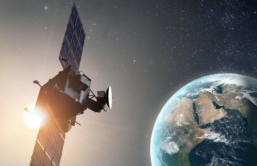Scientists picked up a single burst of mysterious radio waves, the signal could have come from neutron stars or even black holes.
The research team noticed mysterious radio waves in space, billions of light-years away, but they're not sure what caused the strange signals, according to a University of Manchester news release.
The researchers don't believe the waves were of terrestrial origin. The brightness and distance of the signals suggest they come from "cosmological distances when the Universe was just half its current age."
"A single burst of radio emission of unknown origin was detected outside our Galaxy about six years ago but no one was certain what it was or even if it was real, so we have spent the last four years searching for more of these explosive, short-duration radio bursts. This paper describes four more bursts, removing any doubt that they are real. The radio bursts last for just a few milliseconds and the furthest one that we detected was 11 billion light years away," Dan Thornton, who led the study, said.
The bursts most likely came from a massive astrophysical event, possibly involving neutron stars called "magnetars" or black holes.
"Magnetars can give off more energy in a millisecond than our Sun does in 300,000 years and are a leading candidate for the burst," Professor Matthew Bailes, from the Swinburne University of Technology in Melbourne, a co-author of the study, said.
The team believes a similar signal goes off about every 10 seconds.
"The bursts last only a tenth of the blink of an eye. With current telescopes we need to be lucky to look at the right spot at the right time. But if we could view the sky with 'radio eyes' there would be flashes going off all over the sky every day," Michael Kramer, Max-Planck Institute Director and Manchester professor, said.
The team hopes to find out more about the properties of space between the signal's origin and Earth
"We are still not sure about what makes up the space between galaxies, so we will be able to use these radio bursts like probes in order to understand more about some of the missing matter in the Universe," Author Dr Ben Stappers, from Manchester's School of Physics and Astronomy, said. "We are now starting to use Parkes and other telescopes, like the Lovell Telescope of the University of Manchester, to look for these bursts in real time."
Related Articles:
Three "Super-Earths" Discovered, Could Host Life
Sending Personalized Messages To Aliens With The Lone Signal Project
Solar Storm Teaches Scientists How Stars Are Born








